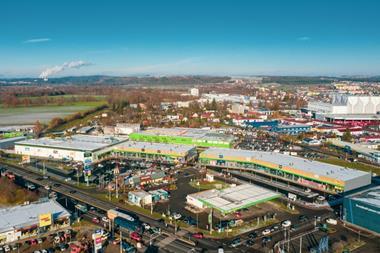Returns from fund-of-fund strategies are at their highest since 2007.
Non-listed real estate funds of funds recorded total returns of 8% in 2014 – the highest for seven years, according to research by INREV and ANREV.
The figure compares with just 0.2% in 2013.
The associations’ joint Fund of Funds Study 2015 suggests a strong recovery of the sub-sector, moving it back to prominence as a key area of interest for institutional investors, following much poorer performances over the previous eight years.
Henri Vuong, INREV director of research and information, said: “These results are impressive, particularly in the context of earlier anaemic performances. They are a clear indication funds of funds have regained their mojo.
“As with other products in the non-listed space, there is change afoot, with some funds of funds reaching maturity within the next decade.”
Vuong, however, said the statistics should “go a long way” to restoring investor confidence in the diversification benefits of funds of funds and “renew enthusiasm” for these vehicles as part of a balanced allocation to non-listed real estate.
Global funds of funds delivered the highest returns last year, at 11.9%.
Returns for funds of funds targeting non-European markets rose to 9.8%, the highest since 2011, while those with a European strategy rose significantly, recording a total performance of 5.2% – a huge jump from the -5.1% achieved in 2013.
Catriona Allen, fund manager at Aviva Investors Global Real Estate Fund of Funds, said: “Global funds of funds have a wider universe of potential funds to invest in, giving greater opportunities to select managers they perceive to be the best in their class, and so able to deliver superior returns.
“They are also able to access sectors and regions at different points of the investment cycle, avoiding potential downturns in one region in favour of other preferred opportunities.”
Funds of funds focused on the Asia Pacific region trailed other regions, with returns at -3.3% in 2014.
Closed-end funds of funds outperformed their open-ended counterparts, with total returns of 8.9% and 7.8%, respectively, continuing a trend that has been consistent since 2009.
The study also reveals a clear distinction in performance and return expectations of different fund-of-fund styles.
Core funds of funds last year returned 8.8%, compared with 5.4% for non-core.
Core funds of funds invested in 13 managers, compared with seven for value-added funds of funds and eight for opportunity funds of funds, with average target IRRs of 8.5%, 12.6% and 14.9%, respectively.
The associations found an impending transformation of the fund-of-fund industry, with 39 funds due to terminate within the next 10 years.
This represents €2.7bn, or nearly 10% of the current total NAV, being removed from the industry and potentially seeking redeployment.
A peak of 11 terminations is anticipated in 2019, equating to €1.1bn, or 11.6% of total NAV.
This still leaves 23 funds of funds with open-end structures and no specified termination.











